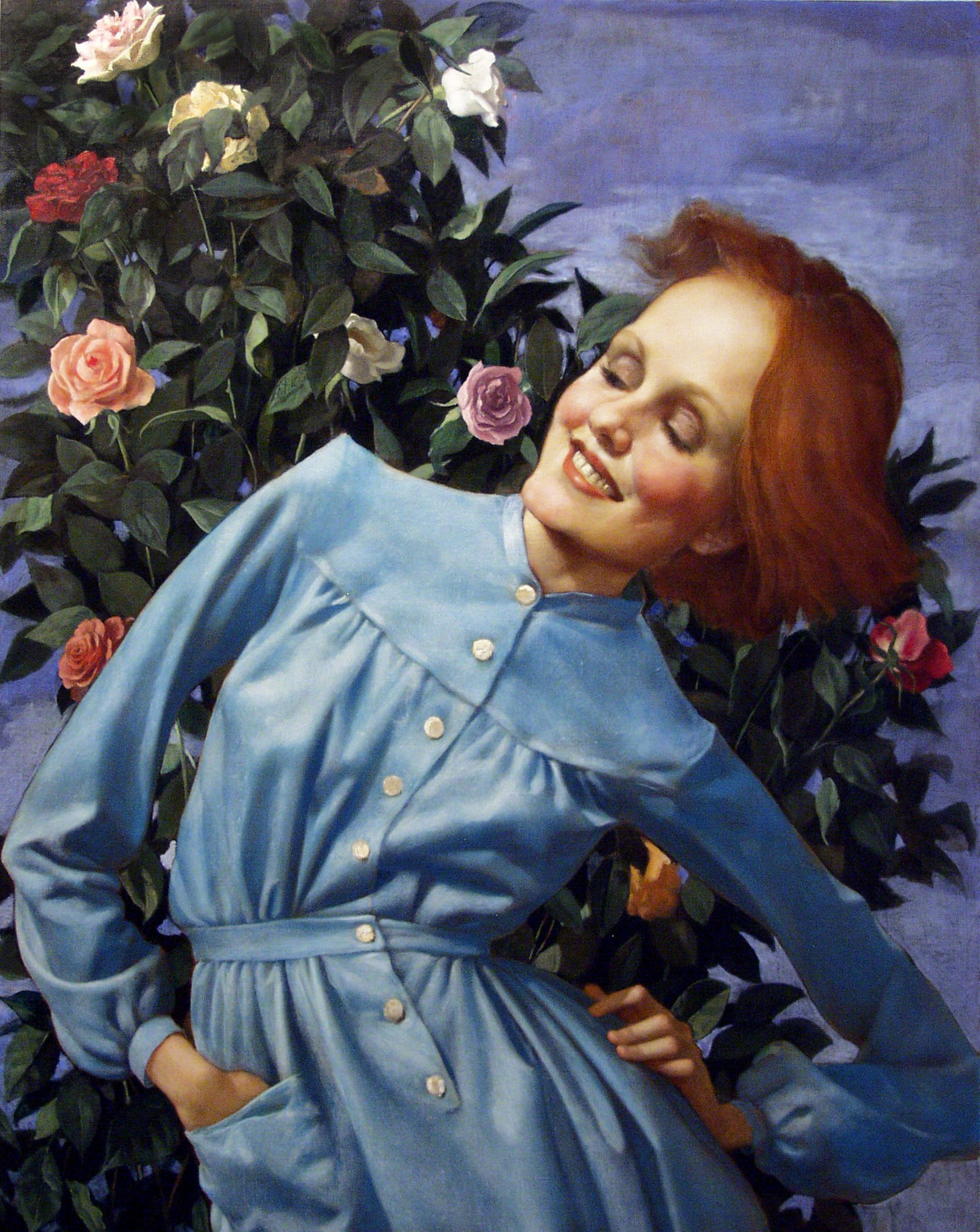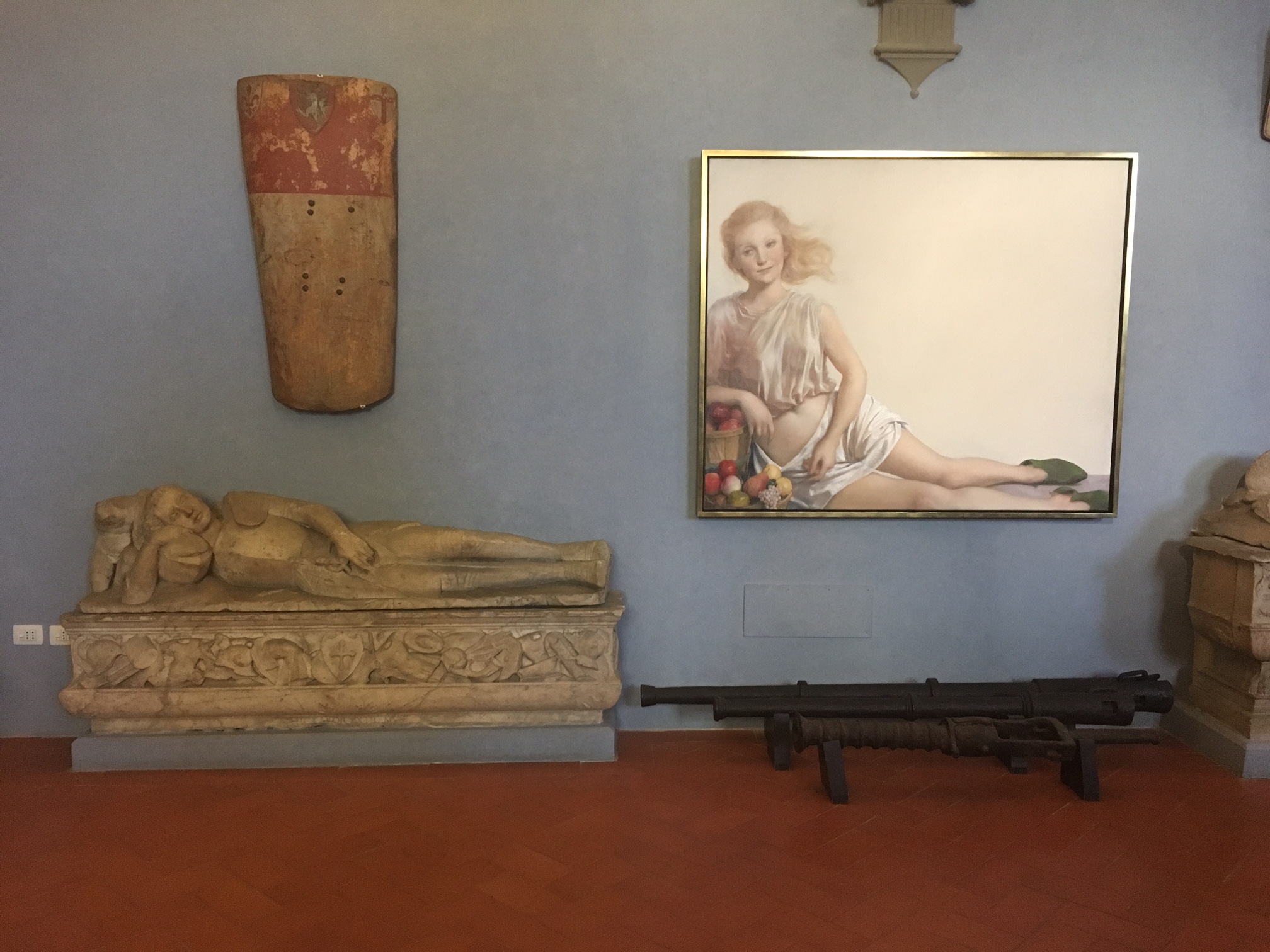Subtlety has never been John Currin’s strong suit. No amount of commentary on the American painter’s technical mastery can trump the repeated comparisons to pornography that his work provokes. Yet his first solo exhibition in Italy—currently underway at the Bardini Museum—has a certain softness, belying his reputation as a provocateur.
The Bardini exhibition is “stripped down” in another sense: it’s just not the voyeuristic experience that Currin fans might have expected. The lack of explicit imagery here means the focus is more on Currin’s interaction with the permanent collection, his play on classical models, and his studied skills as a painter. Though Bardini visitors might view the Currin show as Florence-proofed—mitigated by a museum culture where old masters reign supreme—Currin expressed deep appreciation for its thoughtful curation, pointing to a change of context for his work rather than a censoring.
Mary Gray: We’ll start with an obvious question: how does it feel to have your work on display in Florence for the first time?
John Currin: Actually, I have to say that I was scared to death when this idea was first proposed. That I would have my work in this city, of all places…and specifically in {the Bardini Museum}. I have to say though, when I see it now, I think my work looks very beautiful here. It speaks—much more than I thought it would—to the old things, and I think the old things are speaking to my work as well. So it’s kind of a dream come true, actually. It’s wonderful.

Bent Lady, 2003. Oil on canvas. 48 x 38 inches. Courtesy Lindon Gallery. © John Currin. Image courtesy Gagosian Gallery and Sadie Coles HQ.
MG: Before seeing these paintings in place, I expected the contrast between your work and the permanent collection to be the defining feature of the exhibition. I thought it’d be that way by design. But really, the dialogue is so natural and the contrast isn’t as sharp as many visitors might expect. Can you talk more about the curation of the exhibition and your work’s interaction with what’s already here?
JC: Well, the curators have made beautiful, poetic installations that have brought meanings out of my work that I wasn’t aware of, actually, and emotional strains in my work that I didn’t really feel or see before. There’s a painting upstairs, the reclining woman with the dead soldiers on either side. I’ve lived with that painting for ten years in my house, looked at it every day, and it’s just completely different here. It’s completely got a different meaning, completely. They’ve just changed the painting, in a good way. And {these juxtapositions}, they’re not just jokes. It’s not just “clever”. They’re really lovely, emotional poems that they’ve made with my paintings and with the old things.
MG: If you could leave one of your works behind in Florence, which one would it be and where would you want it displayed?
JC: Well, if we’re thinking about specifically Florentine paintings, I think the picture of my wife—The Penitent, the one used on the exhibition’s promotional postcard—it seems to me a quite Florentine painting. The edges are very Florentine. I’ve noticed, even in my hotel here, in the little decorations, that it’s a Florentine thing to be very precise with one’s edges. That would be the painting of mine that I think seems the most Florentine. And, well, of course I’d want it in the Uffizi (laughs).

The Penitent, 2004. Oil on canvas. 42 x 34 inches. Private Collection © John Currin. Courtesy Gagosian Gallery. Photography by Rob McKeever
MG: You were famously quoted as saying, “I can’t get rid of my trashiness as an artist.” {In the same interview, Phaidon posed the question of whether Currin has more in common with Raphael or Playboy}. Do you think that this relatively “tame” exhibition is an accurate reflection of your work?
JC: I think it speaks to the curation. I think these paintings selected work especially wonderfully in this setting. And I think when I use the word “trashiness,” I don’t just mean imagery that might be considered profane, but also trashiness…physically. I think one reason these paintings work better here is that they’re all physically quite refined, and they’re the ones where I hit something kind of special physically in the painting…physically, they hold up. That’s the big fear as an artist, that the extreme technical beauty of the old craft will just wipe you out. It’s like people with spears going up against a modern army or something. So I do feel that these are a little more refined and are a little less trashy, which is a good thing in this museum.

Nude in a Convex Mirror, 2015. Oil on canvas. Diameter: 42 inches. Private Collection. © John Currin. Courtesy Gagosian Gallery. Photography by Douglas M. Parker Studio
John Currin. Paintings
Until October 2, 2016
Stefano Bardini Museum
Via dei Renai 37, Florence
Exhibition included in museum ticket
More info
A portion of this interview was conducted for LdM News, a video publishing project for Istituto Lorenzo de’ Medici.








